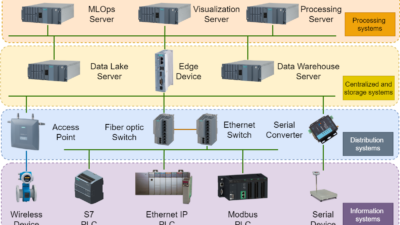Open and proprietary Industrial Internet of Things (IIoT) solutions have different emphases on data management and collection and benefits differ, depending on user goals.
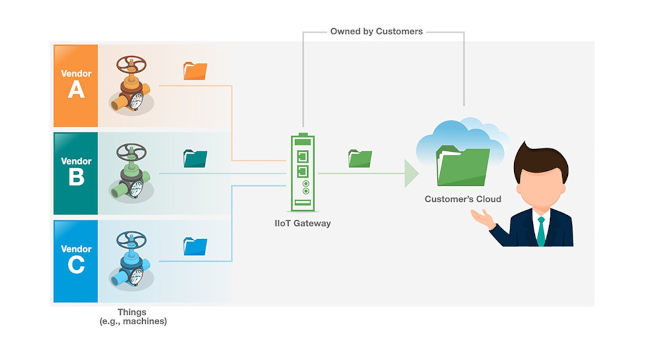
Learning Objectives
- Industrial Internet of Things (IIoT) often come in two types: Open and proprietary.
- Open IIoT models are better for companies requiring IIoT data on a larger scale.
- Proprietary IIoT models are best for single vendors and for quicker applications.
The emergence of the Industrial Internet of Things (IIoT) has changed the way the operational technology (OT) world uses data. In the past, data was simply collected for monitoring purposes to ensure production matched the schedule. Now, data can go well beyond a mere stream of information.
Through analysis, data can help optimize products and services, improve operational efficiency, increase profits and create new business models that were not possible before. The vast business opportunities data present have made the IIoT a key technology for the future success of almost all businesses.
The benefits from this shift have triggered a demand for machines that cater to data acquisition and analysis, anywhere and everywhere possible. Previously, companies valued only production data, which monitors the productivity of machines or assets to ensure smooth operations.
Improve with dynamic updates; don’t forget it and decline
Machine condition data, along with production data, is just as crucial. Enterprises depend on the predictive analysis of real-time operational data to prevent potential failures to reduce maintenance costs and the risk of other possible damages. Furthermore, industrial equipment manufacturers (IEMs) can use the historical data of machines to provide customers with more accurate and faster maintenance services to reduce personnel costs. This data also can be used to optimize a machine’s operation based on environmental and business objectives that require dynamic updates and changes as opposed to the historical “set-and-forget-it” mentality.
Despite the considerable benefits of big data, the advancement of the IIoT in the industrial space is still slow. Hindering factors include variety of edge protocols, non-standardized data, connectivity to the cloud, cybersecurity and managing large-scale systems.
The two most common IIoT connectivity methods
In the early days of the IIoT, IEMs’ answer to this complex and challenging problem was a turnkey IIoT solution. The customer only needed to pay for this service or feature and the equipment vendor would do the rest.
However, as time went on, customers found themselves stuck with multiple IIoT solutions from different vendors on different platforms with little to no interoperability. What’s more, they were missing the big picture all the collected information was supposed to reveal. Everything was in silos from different vendors.
As customers came to grips with this challenge, market demand called for open architectures that offered customers the option to take charge of and maintain their own IIoT strategy, allowing them to talk to any device in any location. The issue remains complex regarding the investment and capabilities required to pull this off at scale. Most customers, even those with will well-intended and well-funded solutions, face tremendous challenges building such a solution.
There are two common connectivity methods. The first is proprietary IIoT connectivity solutions, which have an easy and managed approach, but come with constraints on flexibility, openness, and data ownership. The other is open IIoT connectivity, which focus on the cross-systematic integration of any device and the end customer’s ownership of the solution.
Proprietary IIoT connectivity
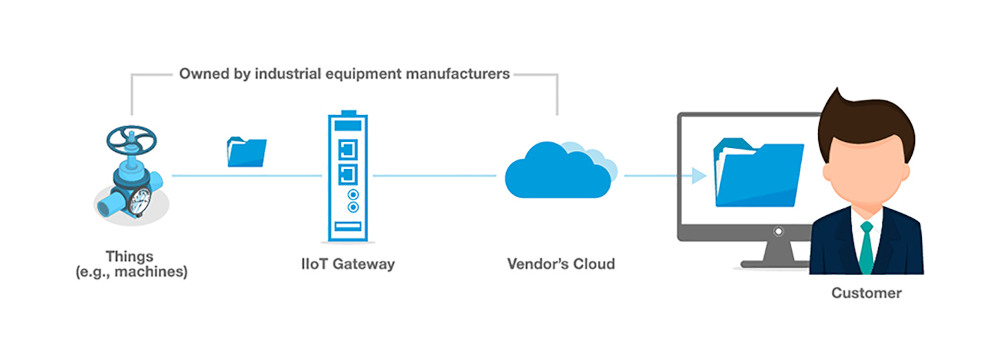
Many IEMs saw the value that came with data analytics and began to provide customers with their own IIoT connectivity solution. To leverage the wealth of data, IIoT gateways are installed in front of or embedded in the “thing,” and data regarding the status of the “thing” will be transmitted from the machine to the machine vendor’s cloud. This turnkey solution allows customers to capture, manage, visualize, and analyze the data collected from these devices on a cloud-based platform. This system is intuitive for users as they only need to log into the machine vendor’s cloud to access their data. It also reduces a customer’s workload by placing the burden of developing and deploying the system solely on the IEM, lowering the overall IT cost for the customer.
A few IEMs also began to provide data analysis services on top of the data collection offering to help customers better understand their machines’ behaviors. This offering is favored by customers with specific application needs, such as monitoring the operations of remote equipment. In the case of the oil and gas industry, punctual operation of remote devices (pumps, control valves, compressors, etc.) is top priority. This has prompted IEMs to use artificial intelligence (AI) to perform real-time analysis of data, such as pump pressure, flow, temperature, etc.
By coupling this data with past benchmarks, they can adjust the equipment parameters to keep them operating normally with minimal human intervention. As a result, proprietary IIoT connectivity solutions’ hassle-free deployment and easy-to-use features have made them very popular among customers.
Limits to proprietary IIoT systems
This easy-to-deploy solution’s homogeneous nature means its service is limited to the IEMs’ own devices. However, a medium-sized enterprise usually has equipment and assets from multiple vendors, in multiple locations, spanning many different applications. This complex, heterogeneous environment often requires the enterprise to use a different solution for each system provided by a different IEM. This could quickly result in extra financial investments, not to mention the possible obstacles arising from the isolated information systems that cannot speak to each other or do so with custom integration.
- Inflexible integration: Within closed IIoT solutions, the data is sent to different platforms, with each using different protocols and different formats, creating a colossal effort at the backend to merge the data.
- Lack of data ownership: Since the customer’s machine data is stored on a private platform built by the IEM, data ownership becomes an issue. If the data is stored in a system owned by the builder, does it still belong to the customer? Furthermore, if a customer chooses to switch platforms one day, the risk of incomplete data transportation—if not all together impossible—is huge. This could potentially cause the historical data and past experiences accumulated by the customer to be lost. All of this, coupled with the risk of a data leak, point out a glaring obstacle.
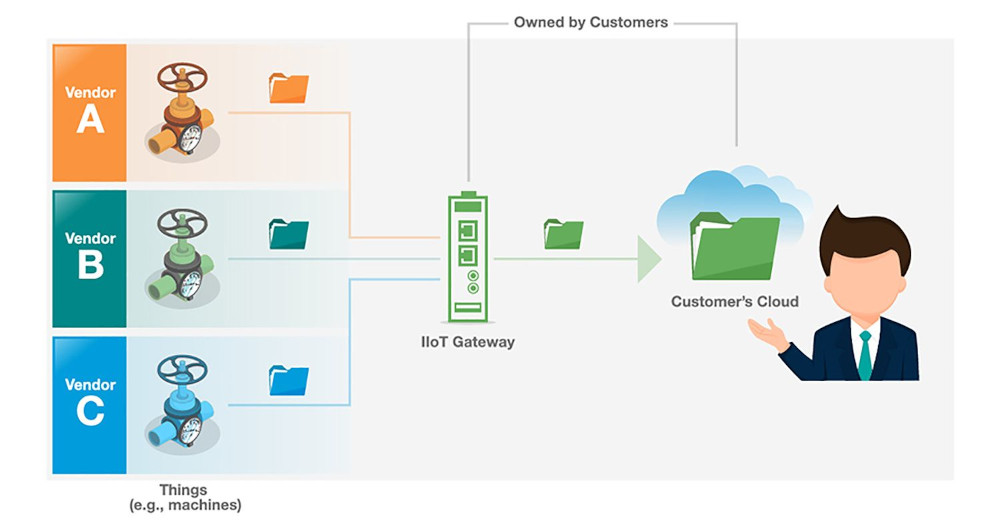
Open proprietary solutions benefits
As data starts to play a more significant role in a business’ core success, its ownership, availability from all “things” (not just some), and the flexibility of integration are the main considerations when choosing solutions.
In open IIoT connectivity architectures, IEMs open application program interfaces (APIs) or use open or standard-based protocols to help customers obtain the data by themselves. Sometimes customers build their own solutions by connecting individual front-end equipment from different manufacturers to an integrated IIoT gateway. The different data formats from the different manufacturers are unified by the IIoT gateway, which reduces the integration difficulties when data is transmitted to the cloud. In addition, the process no longer requires the data to be passed through a third-party’s platform, making it more secure.
Consider the oil and gas industry where oil production and real-time oil prices are closely linked, which means transparency in the production line can make or break the profit margin. To gain real-time data from exploration, development and production to final transportation, oil companies partnered to create an open platform. This called for the IEMs in the supply chain to work as a team by sharing their equipment, production or environmental data for the efficient production of an oil field.
The question then becomes “What can I buy?” versus “What do I have to build by myself?” Commercial open-architectures options have expanded and offer:
- Cloud edge software to extend cloud infrastructure to the edge
- SCADA edge software to interface a vast variety of industrial edge protocols
- Infrastructure services to extend security, networking, and management to the edge
- Machine learning/artificial intelligence (ML/AI) edge solutions for edge processing before pushing back to the cloud.
Don’t forget the IIoT gateway at the core, which can run the above software components and connect to the cloud and edge.
Making the choice between a proprietary or open IIoT solution
For companies that want to deploy a quick IIoT solution for one vendor’s “thing” to obtain data and reap the benefits of the IIoT, a proprietary IIoT connectivity solution is the more rewarding choice.
For companies requiring IIoT data on a larger scale, are interfacing many different “things,” and want a more personalized fit with full data ownership, an open IIoT connectivity solution would be able to deliver the necessary optimization.
As the IIoT market and IIoT ecosystem evolve, more off-the-shelf software and cloud products will continue to provide customers easier and highly scalable products to build their own open IIoT solution.
Proprietary IIoT solutions also are having to adapt quickly to provide more open API’s and cloud-to-cloud integration, as well as opening their solution for customers to access data more easily.
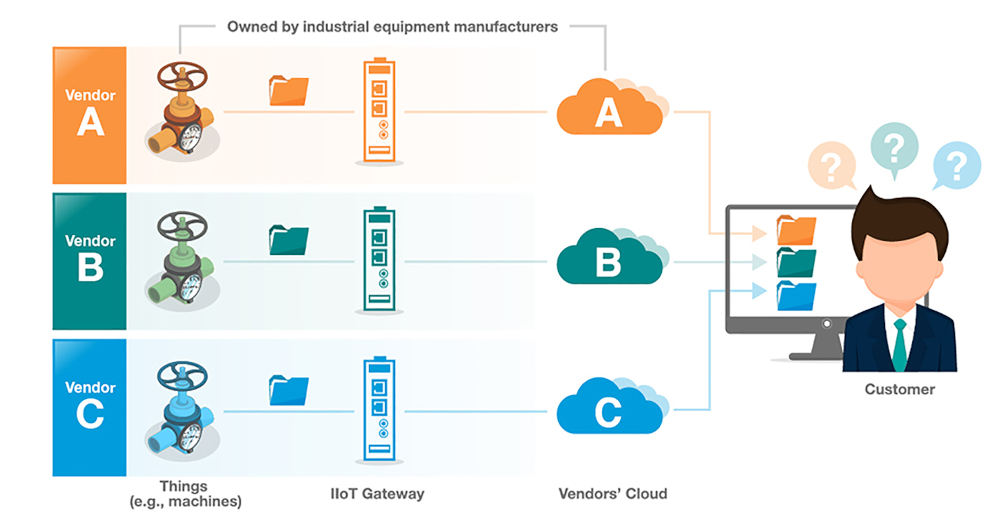
Ethan Chen is product manager, Moxa. Edited by Chris Vavra, web content manager, Control Engineering, CFE Media and Technology, [email protected].
MORE ANSWERS
Keywords: IIoT, proprietary IIoT, open IIoT
CONSIDER THIS
What factors did you consider when choosing an IIoT solution?



